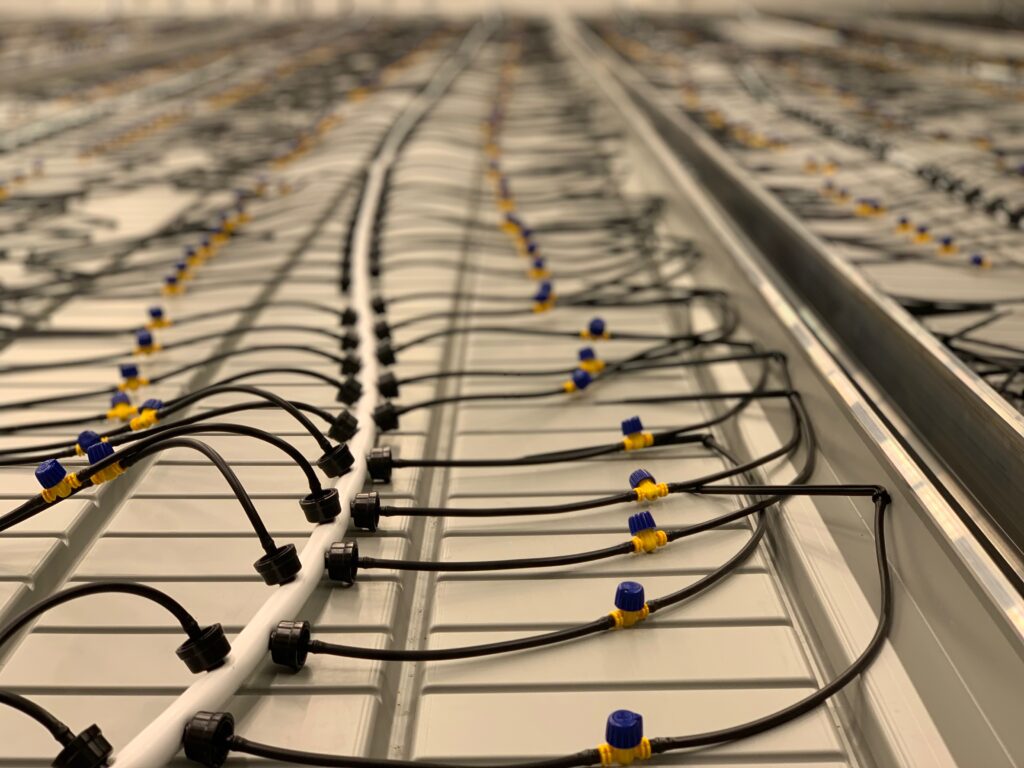Developing a completely integrated water system for a customer requires a specific process. Of course, it begins with conversations about the facility, the cropping system, room size and zoning. We must understand the basic building blocks of the facility to start to envision how the water will be used.
The discussion quickly turns to crop philosophy and steering. How will the plants be irrigated? How frequently? How many different feeds are used? How frequently do they change? Eventually, a water test is required to help determine the treatment needs. Ultimately, however, it all comes down to the dripper. How many drippers, in how many plants, in how many zones, in how many rooms, run at what frequency.
Designing the water system requires, first, a complete understanding of how many plants and how many drippers are required. Everything else hinges on this.
 Each dripper flow rate must be added to the others in the zone to know the zone flow rate. The zone flow rates combined to know the room flow rate. This determines the plumbing sizes for the room. Understanding how many zones and rooms must run at one time will determine the size of the plumbing from the water room outward and will help decide the pump sizes, filtration sizing, treatment systems sizing, fertigation unit sizing, tank sizes and pipe sizes used throughout the water room and facility.
Each dripper flow rate must be added to the others in the zone to know the zone flow rate. The zone flow rates combined to know the room flow rate. This determines the plumbing sizes for the room. Understanding how many zones and rooms must run at one time will determine the size of the plumbing from the water room outward and will help decide the pump sizes, filtration sizing, treatment systems sizing, fertigation unit sizing, tank sizes and pipe sizes used throughout the water room and facility.
The amount of water used per minute and per day also impacts other systems used in the facility. HVAC suppliers needs to know how much water is evaporated and transpired throughout the day to know how much they will need to condense and collect. Drainage and recollection systems will need to consider the water usage in their designs.
Without a solid understanding of the number of plants being grown and how much water will be used in growing them, all of the engineering for the water room and other equipment may need to be reworked.
It is not uncommon for the plant count, benching design and dripper count to change as we work with a customer on their facility. When this occurs, all of the engineering requires a review. This can slow the process, especially if sizing needs to be changed and components, possibly already on order, are required to be upsized. This adds cost to the project and adds delays of weeks or even months depending on how late these changes come.
Determining plant and dripper count early is an easy way to help keep your project on time and costs on projection.
The Dramm team is adept at helping you through the detailed process to design your complete water system. From source to stem, Dramm will provide not just the components and systems to irrigate your plants, but will include the expertise, engineering, project management and startup services required to optimize your water.
Contact a member of the team and let us know if we can help you manage your growth with your next water project.

